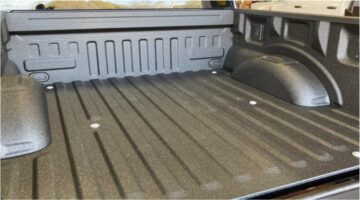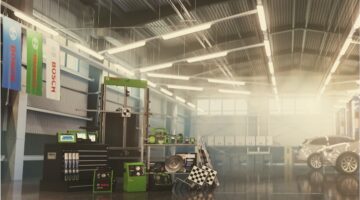Have you ever driven your car to its limits and wondered if it has some untapped power? The truth is, many of today’s cars are often restricted in some way. Car manufacturers have to build cars that cannot exceed certain tolerances. For example, they must meet strict emissions laws.
There are also design tolerances that must not get breached. Another reason for power limitations comes down to money. To sell cars aimed at particular audiences, the cost of parts and manufacturing must stay within a predefined budget.
The good news is that, as a car owner, you can improve the performance of your pride and joy. That means you can improve on things where manufacturers haven’t. Here are a few examples of the performance upgrades you can make to your vehicle:
ECU remap
All cars built since the 1990s have an electronic brain called an ECU. It’s about the size of your wallet and spends its time talking to your engine. There are various sensors dotted in and around your car’s power plant.
When it gets data from these sensors, it uses it to adapt the way your engine is running so that it’s as efficient as possible. When there are problems, it will log an error code and light up that infamous orange warning lamp on your dashboard.
Each time you make a modification to your engine, the details or “map” of values your ECU holds needs to get reprogrammed. If you don’t do this, you will find that your engine doesn’t run smooth and consumes more fuel than it should.
Whenever your ECU gets remapped, the car should get tested on a dynamometer or “rolling road.” It’s a tool engine tuners used to find out what the performance of your car is, both from the wheels and the flywheel.
There are many engine tuners that can remap your ECU for you. Companies that sell specialist cars in Harrogate use tuners that offer Superchips remaps. That’s because they are one the best brands for ECU remaps.
Turbocharger
If your car needs a simple but effective power upgrade, the first step is to install a turbocharger to it. The way that turbochargers work is simple. They take exhaust gases created by your engine and use them to drive a turbine that produces cold air.
The cold air from the turbine then gets fed into the intake manifold. The more air an engine has, the more efficient it will become. High efficiency means more power (and better fuel economy), in case you wondered!
Some power seekers fit two turbochargers to large engines. The first is a small unit that works at lower rev ranges. The second is a “big” turbo that operates outside of the first unit’s range. You might be wondering why such engines don’t use one big turbo.
The problem with turbochargers is that there is a delay or “lag” before the power starts to kick in. The bigger the turbo, the larger the delay. Using two separate turbos ensures minimal lag times and plenty of power!
Exhaust
When you have a car with a turbocharger, it’s essential that there is minimal back pressure in the exhaust system. If you’re using the stock system that came with your car, your turbocharger won’t be producing as much power as it is capable of doing.
That’s because it has to contend with the bottleneck that is your stock exhaust system! To resolve that problem, you will need to fit an aftermarket system that has a larger bore. Enthusiasts opt for systems made from stainless steel to ensure longevity.
It’s worth upgrading the exhaust manifold on the engine too. That way your entire system can take advantage of a performance exhaust.
Supercharger
An alternative to turbochargers are superchargers. Instead of using exhaust gases, superchargers produce extra air by running off a pulley on the engine. They have an advantage over turbos in that the power is constant. Whereas turbochargers can only create the extra air when the turbine has spooled up.
Some of today’s “twin charged” engines use both a supercharger and a turbo. The former for lower rev ranges, the latter for midrange and top end engine speeds.
Air filter
Before any air can enter your engine, it must first pass through a filter. All modern cars have plastic air boxes with filters inside. The job of the air filter is to ensure no large particles enter your engine’s combustion chambers. If they did, your engine would soon become toast!
The thing about stock air filters is that they are all made from paper. They prevent a lot of air from entering the engine because they are so restrictive. There are a few options open to you if you want to upgrade your stock air filter.
An easy upgrade is to replace the paper air cleaner with a foam one. Companies like K&N make foam filters for hundreds of different models. They discovered that foam filters let more air into the engine, but still do a good job of keeping out the bad guys (i.e. the dirt particles).
You might be wondering why car makers don’t all use foam filters. The answer is simple: cost! It’s cheaper to produce and use paper filters than it is to use foam ones. From an environmental point of view, foam filters are better because you never need to replace them.
All you have to do is clean them each time you service your car and refit them back to your air box!
The next option is to replace the air filter and box assembly entirely. You can buy induction kits that comprise of a cone filter that fits onto the trunking attached to your intake manifold. The only downside to induction kits is that you need to create some cold air feeds that work with them.
Otherwise, the engine will just take in hot air. Some people choose to install air scoops on their bonnets. While others might put cold air feeds running underneath the wings or front bumpers.












